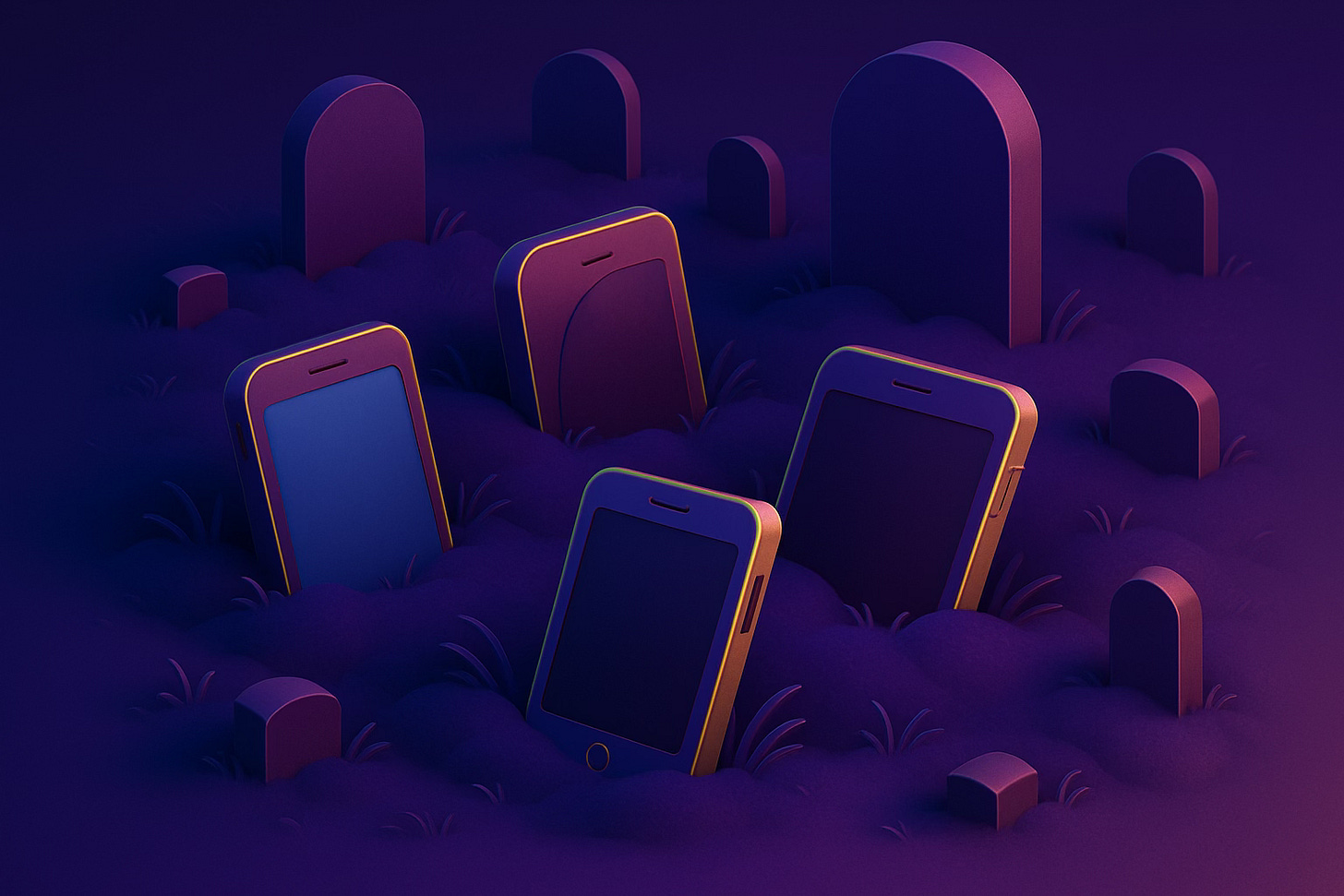Lessons I Learned from My Failed SaaS Products
I made every mistake so you don’t have to. Here’s what I wish I knew before launching.
Let’s talk about failure.
Not the kind you spin into a “learning experience” two days later on LinkedIn. I mean the kind that stings. The kind you bury under new side projects and convince yourself “maybe that one didn’t count.”
Well, they do count. And this post is about the ones that didn’t work—and what they taught me anyway.
The Graveyard of Good Intentions
I’ve built a lot of stuff. Some shipped, some scaled, and some… well, some never made it past 20 users.
There’s no neat bow to tie around all of them. But I’ve noticed patterns. And if you’re building something—or thinking about it—I hope these lessons save you a few sleepless nights and a few thousand dollars.
1. Scratching your own itch isn’t enough
I used to believe that if I solved a problem I had, others would follow. But a personal pain point isn’t always a business. Just because you want it doesn’t mean enough people are willing to pay for it.
I launched a tool once (called wikit, spent about a year building it out) that streamlined how companies managed their internal documentations. A few designer friends liked it. But no one else cared. Why? Because I never validated the market beyond my own little bubble. Everyone just asked - so you are building Notion? Why not just use Notion?
Lesson: Solve a problem that’s both painful and expensive, or nobody will care.
2. Building is comforting. Validating is scary.
It’s wild how safe it feels to write code. How in control I felt when pushing commits, refining designs, deploying features. That was my cocoon. It’s my happy place, where hours go by and the world doesn’t even exist.
But getting out there, showing an unfinished thing to real humans, asking them to pay, listening to silence or rejection? That was the hard part. And so I avoided it.
Lesson: You can build in public, or you can fail in private. Your choice.
3. No one cares about “better”, they care about different
One of my dead SaaS projects (taskware) was objectively better than the alternatives. Cleaner UI, smoother flows, faster performance. But that wasn’t enough.
People don’t switch tools because of 10% improvements, they switch because of aha moments. Because of clear, meaningful differences. Taskware didn’t have that. It was just a prettier UI, with no added value over the competition.
Lesson: “Better” is a trap. Find your weird angle and lean into it.
4. Distribution isn’t optional, it’s half the product
Some of my products were beautifully designed, polished, even well-coded. And they went absolutely nowhere.
Why? Because I treated marketing like a chore instead of a core part of the build.
I thought launching on Product Hunt and tweeting a few times was a go-to-market strategy. Spoiler: it’s not.
Lesson: If you don’t already have an audience, you better start building one before you build the product.
5. Complexity kills momentum
There’s something seductive about feature-rich MVPs. “Just one more thing” becomes a spiral. Suddenly your lean side project has auth, dark mode, three integrations, and a custom analytics dashboard.
I’ve wasted months on features no one asked for. By the time I launched, I was burnt out and users didn’t even want half of what I built.
Lesson: Launch when it’s slightly embarrassing. Add later.
6. You can’t outwork a bad market
I once poured 6+ months into a B2B idea targeting a segment I didn’t understand and couldn’t reach. I thought if I worked hard enough, the traction would come.
It didn’t.
You can’t brute force product-market fit. You can’t grind your way out of the wrong audience. And passion without context is just noise.
Lesson: Energy is not a substitute for strategy.
So what do I do differently now?
Here’s my checklist before I write a single line of code:
Can I find 10 real people who desperately want this?
Will at least 3 of them pay to solve it now?
If possible, service first then productize it.
Do I have access to the distribution channel for this market?
Can I explain it in one weird, memorable sentence?
Will I be excited to still work on this after the launch dopamine wears off?
If not, I kill the idea. No hard feelings. Not every idea is your baby.
Failure isn’t wasted, it compounds
Here’s the thing they don’t tell you: every failed SaaS you ship makes your next one faster, clearer, and sharper. You start seeing traps earlier. You feel the red flags in your gut.
You can’t skip the process. But you can stop repeating the same mistakes.
If you’ve failed, good. You’re in the arena. You’re learning what most people never will. Keep going.
You’re not building products. You’re building judgment.
And that’s the real compounding asset.


